Head-to-Head: Microsoft Surface Pro 3 vs. Apple MacBook Air
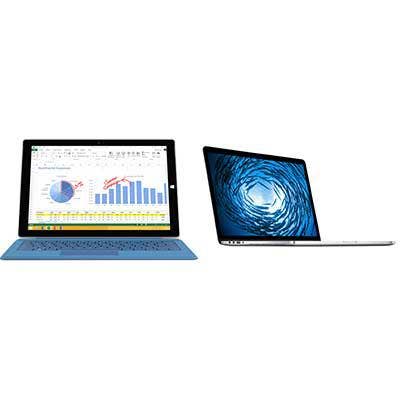
Microsoft vs. Apple
It's long been said that Microsoft products are never really ready until version 3.0 is released. Seeming to keep to that model, the company on May 20 unveiled Surface Pro 3, the latest version of its ultralight laptop-tablet hybrid that gets everything just about right. Perhaps sensing the pattern, the market greeted its prior two models with a lukewarm reception.
But this time Redmond comes out of the gate gunning for Apple; with cherry-picked comparisons between Surface Pro 3 and Apple's MacBook Air on its product page. Here's a look at how they really stack up.
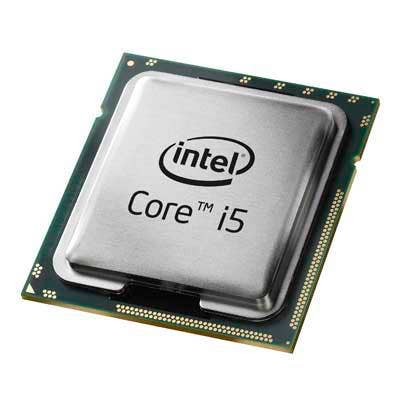
Configurations
While Microsoft and Apple both offer a choice between Intel's 4th-gen Core i5 and Core i7 dual-core Haswell processors, Microsoft also offers Surface Pro 3 with the Core i3 reportedly running at 1.6GHz. This brings its entry-level device in at $799 compared with the $899 starting list price for the Apple MacBook Air. For that extra hundred bucks, Apple's 11.6-inch MacBook Air shaves four-tenths of an inch off the screen but builds in a 1.4GHz Core i5 and 128 GB of solid-state storage, which is twice that of the low-end Surface. And Apple includes a keyboard; Microsoft does not.
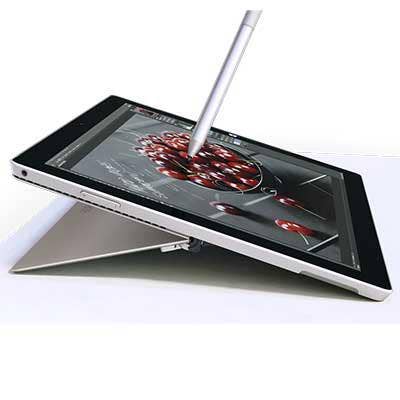
CPUs, Memory and Storage
Microsoft is mostly silent on clock speeds of the processors it will use in the Surface Pro 3, but Intel's Core i3, i5 and i7 CPUs run between 1.4GHz and 1.7GHz, as in MacBook Air's 1.4GHz Core i5 and 1.7GHz Core i7. For storage, Microsoft offers 64-, 128-, 256- and 512-GB options. Apple drops the 64-GB option but has all the others. All storage is solid-state. Microsoft also includes a micro SD card slot on all its Surface Pro 3 models. Apple reserves this feature for the 13-inch MacBook Air, which has a full-size SDXC slot. Both companies offer their devices with a choice of 4 or 8 GB of RAM. Memory and storage are fixed options.
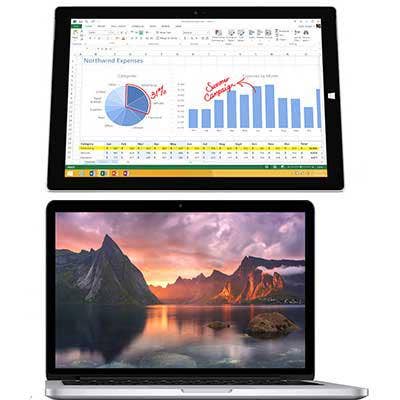
Display
With the Surface Pro 3, Microsoft went to a 12-inch full HD display with a native resolution of 2,160 x 1,440. That translates to a pixel density of 216 ppi, which approaches Retina caliber. And since it's also a tablet, it naturally incorporates 10-point touch capability. Apple straddles Microsoft's fixed option with 11.6-inch and 13.3-inch models, and offers no touch option yet (though it's rumored to be working on one). The 11-inch model offers a native resolution of 1,366 x 768, or 135 ppi. The 13-inch unit displays 1,440 x 900 natively, or 128 ppi.
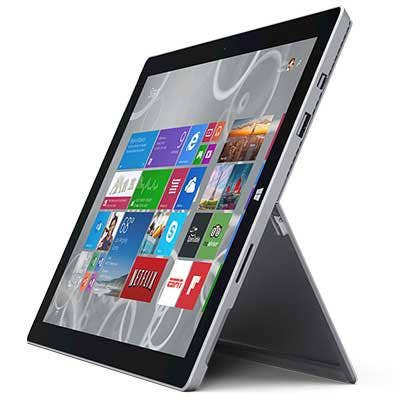
Graphics Support
Microsoft and Apple both use Intel GPUs built into Haswell. Surface Pro 3 drives its display with the HD Graphics 4400 GPU, while both MacBook Air models use the HD Graphics 5000 GPU. This becomes most important when connecting an external monitor. While Microsoft again is silent on support external resolutions, most reports indicate that its Mini DisplayPort will drive 4K resolutions around 3,840 x 1,600. The MacBook Air's Mini DisplayPort (which also carries Thunderbolt protocols) will support its native screen plus an external display with a maximum resolution of 2,560 x 1,600 and can be adapted to DVI, VGA and HDMI with audio.
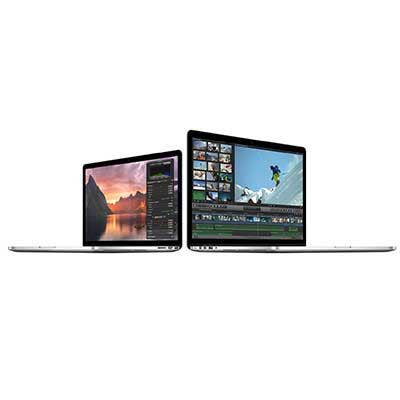
External Storage
As referenced earlier, SD-card storage can be found on all Surface Pro 3 models, while only the 13-inch MacBook Air provides a slot. Units from both companies include USB 3.0; Microsoft provides one port, Apple two. Apple also piggybacks the Thunderbolt storage protocols atop the Mini DisplayPort bus. Intel's Thunderbolt specification currently provides 10-GBps bandwidth -- double that of USB's fastest -- and recent updates bring 20-GBps throughput and a peer-to-peer networking protocol.
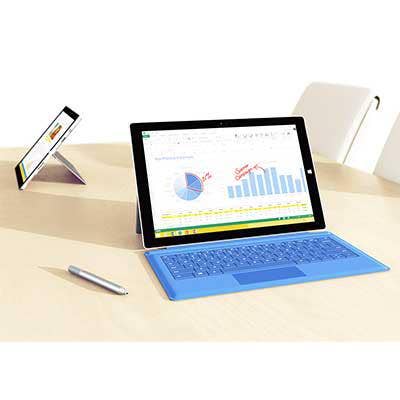
Battery Life
Microsoft claims that Surface Pro 3 will run for "up to" nine hours on a single charge, precisely the same time period that Apple claims of the 11-inch MacBook Air. Of the 13-inch model, Apple claims as many as 12 hours of operation. In our experience, we have yet to run any Apple laptop for nine straight hours on a single charge, let alone 12. But six to seven hours of continuous operation on a MacBook is something we do all the time, and the Haswell-based MacBook Air barely notices a 10-hour stint. For Surface Pro 3, the proof will be in the pudding. And when charging does become necessary, both companies now include the quick-releasing magnetic connectors that we've been trumpeting for years.
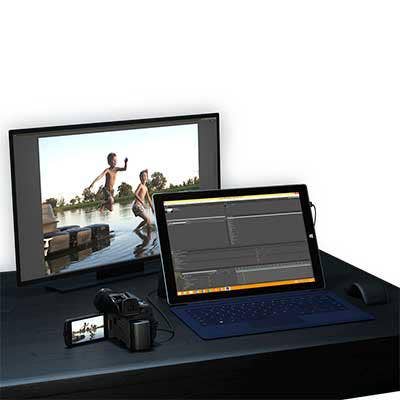
Software
As longtime users of Mac OS, we're partial to its stability, consistent interface and productivity features. But Windows users can be just as zealous about their chosen platform. Most important are the apps with which we do our jobs. Both of these systems can run Office apps, graphics packages and just about everything else. For apps that run only on Microsoft's platform, Apple computers can run Windows natively or virtually with plenty of performance to spare, giving those who prefer Mac OS the best of both worlds.
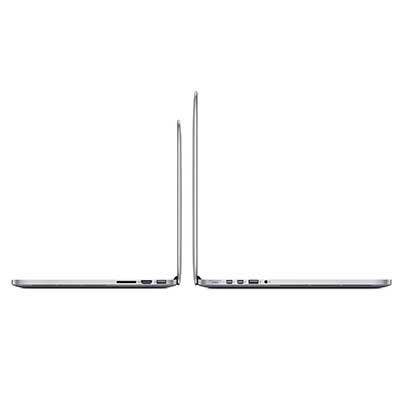
Dimensions
Devices from both companies are constructed of a metallic outer shell; Microsoft's is magnesium, Apple's is aluminum. The Surface Pro 3 measures 11.5 x 7.9 x 0.36 inches. The 11-inch MacBook Air measures a similar 11.8 x 7.6 inches. Its thickness varies from 0.11 of an inch to 0.68 of an inch, which averages to 0.40 inches, just four-hundredths of an inch thicker than Surface. Thickness of the 13-inch Air is the same. That unit measures 12.8 x 8.9 inches, that's about an inch-and-a-third wider and an inch deeper than Surface. At just less thanr 3 pounds, it's also about a half-pound heavier than Surface.
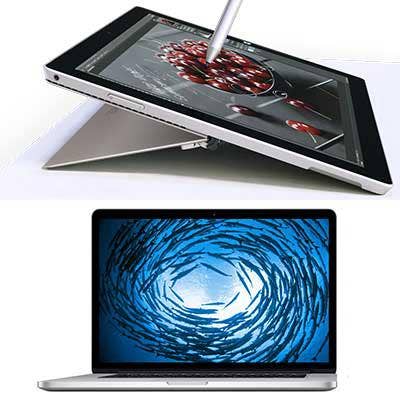
The Bottom Line
The Surface Pro 3 and MacBook Air are quite similar. They're both well powered with ample storage and memory options, and both run virtually any software. But Surface also can break free of its keyboard and touchpad to become a self-contained tablet, complete with pressure-sensitive stylus and 5-megapixel cameras front and rear. For organizations seeking a slate to run Windows apps, the Surface Pro 3 will be among the most powerful available. But its base price of $929 with keyboard and 64 GB total storage includes only about 36 GB after factoring in the operating system. The 128-GB model also has the Core i5, and lists for $1,129 with keyboard. That tips the scales toward the 13-inch MacBook Air at $999. The divide becomes $2,079 vs. $1,749 with both machines in their maximum configurations. Surface Pro 3 will begin shipping June 20; MacBook Air is available now.